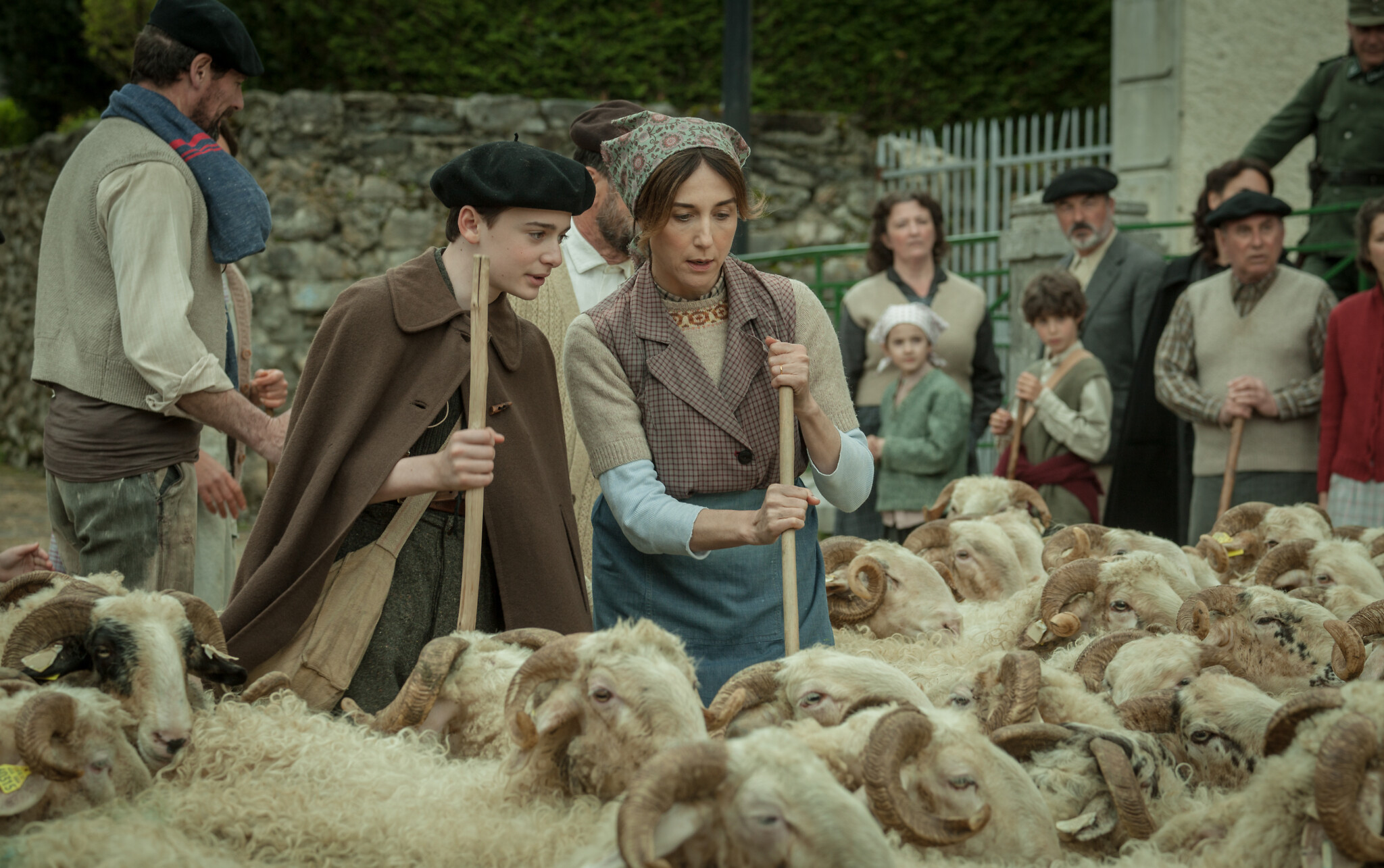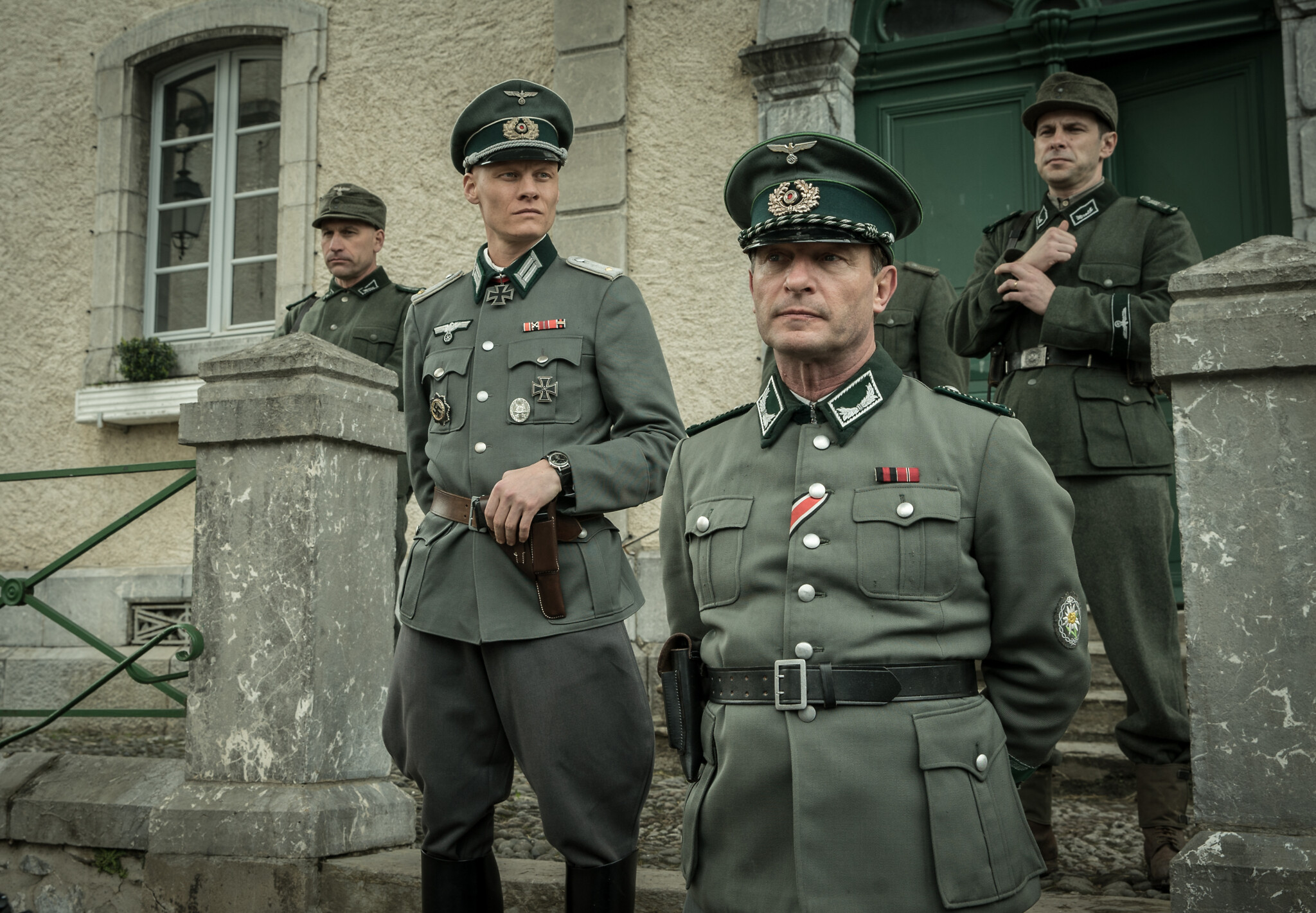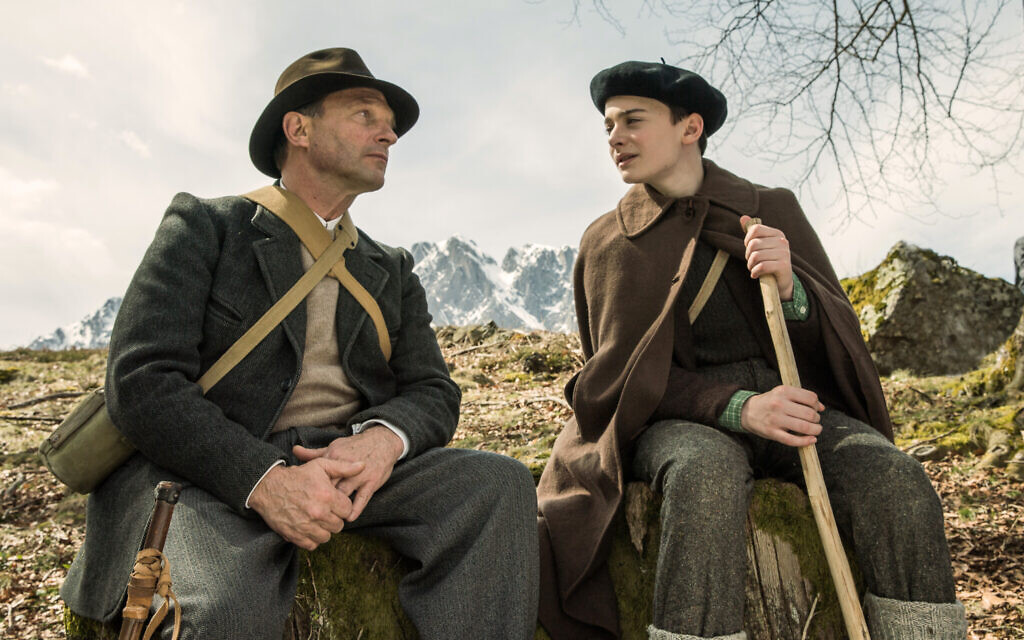Waiting For Anya author Michael Morpurgo says story is ‘more relevant than ever’
The former children's laureate spoke about the messages of his Holocaust story, which has been adapted into a film starring Anjelica Huston, Thomas Kretschmann and Noah Schnapp
Author Michael Morpurgo believes his story about the war-time rescue of Jewish children in occupied France is “more relevant today” than it was 30 years ago when it was first published.
The acclaimed children’s author spoke to Jewish News ahead of this week’s UK release of Waiting for Anya, which was adapted for the big screen.
Directed by Ben Cookson, the coming-of-age drama stars Anjelica Huston, Stranger Things star Noah Schnapp and Thomas Kretschmann, alongside Jean Reno, Sadie Frost and Frederick Schmidt.
Get The Jewish News Daily Edition by email and never miss our top stories Free Sign Up
The film depicts the true-life rescue of Jewish children smuggled across the Spanish border to safety disguised as shepherds, right under the noses of high-ranking Nazi officers, by the inhabitants of a small rural village in the Pyrenees in southern France.
Morpurgo, whose stepfather was a non-practising Jew, said he never thought when writing the novel 30 years ago that the themes it explores would become so prescient.
“In a strange way, it’s more relevant now, and I never thought it would be,” he said. “Wherever we look today, we find a fear of others, a resentment, a suspicion and of course that can lead to hate.”

The community portrayed in the book influenced the film-making process, Morpurgo said, who described the experience of depicting the story on-screen as more immersive than it was with his acclaimed book War Horse, turned into a film by Steven Spielberg in 2011.
Before making the film, which was shot on location in rural southern France, Cookson travelled to the area to speak to residents, some of whom had first-hand memories of life under occupation.
“He did take the trouble to go there and talk to the people and live there for a month or so,” Morpurgo said. “You couldn’t plonk it somewhere else and call it a location.”
“With War Horse, the war scenes were extraordinary, but I felt that quite a lot of the culture of the place, whether it was Devon or whether it was the battlefields of France, I felt it wasn’t nearly as convincingly portrayed for me,” he added.
The Holocaust, Morpurgo said, was at the forefront of his mind while writing the book as “history, just history from which you must learn.”
But he says in the decades since it was first published, “it’s almost like there has been some sort of cancer in the thinking of people, that this thing seems to rise and rise,” making an adaptation of the book more important than ever.
Some young people today, the author warned, seem “unaware” of the Holocaust itself, its modern significance or, going further back, the pogroms that took place in medieval England.
“I find eyebrows being raised,” he said. “I tell them to go back centuries and centuries to medieval England, to York. There was a massacre of Jewish people because they were Jews.”

Sobering statistics flashing up on screen at the film’s end reveal some 75,000 French Jews were deported to Nazi camps during the Second World War, evoking the extent of collaboration in the country under the Vichy regime.
But in conveying the lessons of the Holocaust to younger readers, both the book and its “faithful” adaptation focus on the period’s heroes, rather than its collaborators – a decision Morpurgo openly admits.
“Waiting for Anya doesn’t disguise this is where some of these Jewish people ended up,” he said. “I was telling a story about a small community which did gather around, and they existed.”
“I chose to focus on the positive side,” said the author – whose 2018 book In the Mouth of the Wolf recounts how his uncle, a conscientious objector, came to fight with the French resistance.
In spite of the story’s focus on heroes, it could offer important lessons to children about the complexity of human nature. “The most important thing is not to spend our time pulling the wool over their eyes,” Morpurgo said.

Nowhere in the film is the moral ambiguity of the period starker than in its dramatic opening scene, in which a Jewish father, Benjamin, is separated from his daughter Anya as they flee deportation.
Benjamin, played by Frederick Schmidt, saves his daughter from near-certain death by carrying her into the open-window of a commuter train stopped on the opposite platform.
The scene, not featured in the book, was inspired by a real railway station in Bobigny on the outskirts of Paris – where for a brief moment ordinary commuters could apparently catch glimpses of Jews facing deportation.
“Can you imagine coming the other way?”, asked Morpurgo.
He added: “Most people would have looked out the window and seen these trains. I wish they would have asked questions. Some of them might have been antisemitic but most weren’t, they just looked the other way to save their skins.
“The collaboration or the resistance, or the saving of these people, happened in ordinary places in little houses hidden away, in little villages hidden away.”
Waiting for Anya (12A) will be out in UK cinemas on Friday

Thank you for helping to make Jewish News the leading source of news and opinion for the UK Jewish community. Today we're asking for your invaluable help to continue putting our community first in everything we do.
For as little as £5 a month you can help sustain the vital work we do in celebrating and standing up for Jewish life in Britain.
Jewish News holds our community together and keeps us connected. Like a synagogue, it’s where people turn to feel part of something bigger. It also proudly shows the rest of Britain the vibrancy and rich culture of modern Jewish life.
You can make a quick and easy one-off or monthly contribution of £5, £10, £20 or any other sum you’re comfortable with.
100% of your donation will help us continue celebrating our community, in all its dynamic diversity...
Engaging
Being a community platform means so much more than producing a newspaper and website. One of our proudest roles is media partnering with our invaluable charities to amplify the outstanding work they do to help us all.
Celebrating
There’s no shortage of oys in the world but Jewish News takes every opportunity to celebrate the joys too, through projects like Night of Heroes, 40 Under 40 and other compelling countdowns that make the community kvell with pride.
Pioneering
In the first collaboration between media outlets from different faiths, Jewish News worked with British Muslim TV and Church Times to produce a list of young activists leading the way on interfaith understanding.
Campaigning
Royal Mail issued a stamp honouring Holocaust hero Sir Nicholas Winton after a Jewish News campaign attracted more than 100,000 backers. Jewish Newsalso produces special editions of the paper highlighting pressing issues including mental health and Holocaust remembrance.
Easy access
In an age when news is readily accessible, Jewish News provides high-quality content free online and offline, removing any financial barriers to connecting people.
Voice of our community to wider society
The Jewish News team regularly appears on TV, radio and on the pages of the national press to comment on stories about the Jewish community. Easy access to the paper on the streets of London also means Jewish News provides an invaluable window into the community for the country at large.
We hope you agree all this is worth preserving.
-
By Brigit Grant
-
By Laurent Vaughan - Senior Associate (Bishop & Sewell Solicitors)
-
By Laurent Vaughan - Senior Associate (Bishop & Sewell Solicitors)
-
By Laurent Vaughan - Senior Associate (Bishop & Sewell Solicitors)
-
By Laurent Vaughan - Senior Associate (Bishop & Sewell Solicitors)






















